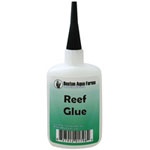Many things can affect the dissolved oxygen in your aquarium. The most important things to remember are stocking levels and cleaning. Too many fish will require more oxygen than is available in the water. Fish waste, decaying food and rotting plants are all consumed by bacteria, which also require oxygen. Regular cleaning, water changes, filter maintenance and proper feeding will ensure that the bacterial demand on dissolved oxygen is under control.
There are also many things that you can do to improve dissolved oxygen in your aquarium. Most of the dissolved oxygen in your aquarium comes from the atmosphere; this is accomplished through interaction with the water surface. Increased water surface area gives your aquarium higher potential for atmospheric interaction. Turbulence and water movement along with good aquarium design will increase your aquariums water surface area, and dissolved oxygen. Use of an air pump and air stones or a power head with a venturi aeration feature will also greatly increase your dissolved oxygen. The tiny bubbles created have huge amounts of surface area and greatly increase the potential for oxygen to dissolve into the water. Temperature also plays a significant role in dissolved oxygen levels. Concentration of dissolved gas decreases with increase in temperature, so avoiding high temperatures (above 85 Fahrenheit) in very important. Taking all these factors into account when setting up an aquarium will go a long way to ensuring your long term success.
 That Fish Blog – Aquarium Advice and Information
That Fish Blog – Aquarium Advice and Information





is there any sort of chemical test or any way of monitering the percentage of dissolved oxygen in the water for scientific testing purposes?
There are both chemical test and electronic monitors for measuring disolved oxygen.
If you look in the aquarium supplies section of our website you will find them in the test kits, and testing equipment catagories on the left hand side of the page.
hope that answered your question
Thanks,
Dave
when the electric goes out.Does pouring water into the tank supply any oxygen?
Dave-
Pouring water in will do very little to improve O2 levels if the tank is not running. The O2 levels should no tbe an issue immediately in a tank that is not overloaded, there will be a window os several hours until it will become a serious issue. The best solution is to have a battery operated air pump as a backup. Water changes come into play when the electric is out for an extended period, as the chemistry of the tank diminishes without filtration. If you experience an outage, be sure the tank doesn’t backflow into the sump if you have one, and monitor the fish. A battery operated air pump/airstone will help when the dissolved O2 runs low, and test the chemistry for ammonia levels to indicate when a water change may be necessary to reduce toxicity. Then hope that the electricity is restored ASAP!